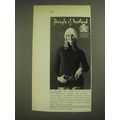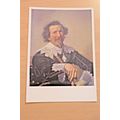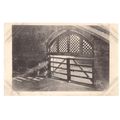Jersey - Watching a pleasure steamer by Paul Martin -Museum repro postcard c.70s
- Condition : Used
- Dispatch : 2 Days
- Brand : None
- ID# : 188066798
- Quantity : 1 item
- Views : 171
- Location : United Kingdom

- Seller : justthebook (+1704)
- Barcode : None
- Start : Fri 27 Dec 2019 11:39:05 (EDT)
- Close : Run Until Sold
- Remain : Run Until Sold
Checks/Cheques
 for 1 item(s) edit
for 1 item(s) edit
Shipping Calculator
More Listings from This Seller view all
Seller's Description
- Postcard
- Picture / Image: Watching a pleasure steamer, Jersey - photo by Paul Martin
- Publisher: Victoria and Albert Museum
- Postally used: no
- Stamp: n/a
- Postmark(s): n/a
- Sent to: n/a
- Notes / condition:
Please ask if you need any other information and I will do the best I can to answer.
Image may be low res for illustrative purposes - if you need a higher definition image then please contact me and I may be able to send one. No cards have been trimmed (unless stated).
------------------------------------------------
Postage & Packing:
Postage and packing charge should be showing for your location (contact if not sure).
No additional charges for more than one postcard. You can buy as many postcards from me as you like and you will just pay the fee above once. Please wait for combined invoice. (If buying postcards with other things such as books, please contact or wait for invoice before paying).
Payment Methods:
UK - PayPal, Cheque (from UK bank) or postal order
Outside UK: PayPal ONLY (unless otherwise stated) please. NO non-UK currency checks or money orders (sorry).
NOTE: All postcards are sent in brand new stiffened envelopes which I have bought for the task. These are specially made to protect postcards and you may be able to re-use them. In addition there are other costs to sending so the above charge is not just for the stamp!
I will give a full refund if you are not fully satisfied with the postcard.
----------------------------------------------
Text from the free encyclopedia WIKIPEDIA may appear below to give a little background information (internal links may not work) :
*************
Paul Martin (April 16, 1864– July 7, 1944) was a French-born British photographer who pioneered both street and night photography.
Paul Augustus Martin was born born in Herbeuville, France in 1864 in Alcase-Lorraine, but in the wake of the Franco-Prussian war and experiencing dire poverty during the Paris Commune fled with his family as a child to England in 1872. There, from 1873-1878, he attended an English school, then returned to France to continue his schooling 1878-80 at École Gosserez, Châlons-sur-Marne, before being apprenticed to a wood engraver 1880-1883.[1]
Martin's strong talent in drawing brought him work in Fleet Street as a wood engraver where much of his work would have involved copying photographs, wood engraving being then the means of reproducing them in newspapers.[2][3] He had first experimented in photography when he was ten years old, but he was nineteen before he purchased his first dry-plate camera in 1884 and joined camera clubs to learn as much as he could about the medium.[4]
The camera Martin used, the Fallowfield detective camera, became available in 1889 and was considered a ‘hand camera’.[5] Constructed of mahogany with a simple reflex viewfinder on the top, rendering a waist-level view. It weighed only 1.8 kg, and was camouflaged in brown paper to resemble a parcel. Plates were stored in an internal rack and flipped down once exposed. His camera presents us with a waist-level view, a child’s perspective on the scene in effect, and equally inquisitive. Though modest and shy, during his lunch hours Martin started photographing on the surrounding streets of London, as a means of improving and testing his technique; “It is impossible to describe the thrill which taking the first snaps without being noticed gave one,” he said. The people he photographed were workers and craftspeople, working class subjects less confronting than the gentry who would have felt entitled to challenge him.[4] though his imagery of the less privileged is sympathetic, it not motivated by any urge for reform which inspired the later work of Jacob Riis, for example.[6]
The viewfinder of the camera Martin used was rudimentary and served only to aim, rather than to compose, so his pictures have a snapshot appearance,[7] with the subject placed at centre in the frame and inclusions of unintended detail at the edges. Martin reported that reaction from fellow camera club members...
were not encouraging towards the type of subject which I was then taking … many members regarded some of my studies as rather infra dig, or even shocking. They felt that a plate demanded a noble and dignified subject, a cathedral or mountain or family party dressed up in their Sunday best.[8]
though he admitted that;
Had I independent means, I should probably have pursued exactly the same roads as the other pictorial workers of the nineties whose ambition it was to make their photographs look as much like a painted picture as they could. Careful composition, superimposed clouds, soft printing and other technical tricks were used to produce effects which were certainly beautiful, but which took the photographer further and further away from life. I was for a time as keen as anyone and fairly competent, but it was an expensive hobby and never really had the same interest for me as the real snapshot – that is, people and things as the man on the street sees them.
In the middle of the 1890s, Martin adapted his process of making images for lantern slides; this was the final product which he showed at club meetings and in competitions. These he would mask with opaque material and a high contrast copy negative made so that the subject was isolated from the busy backgrounds[9] for which his photographs are now so highly valued as honest records of Victorian life.[10][11] The strategy also protected him from any legal issues that might arise from what else the images might show, such as copyright commercial signs and from intruding on the privacy of especially upper-class who might stray into the frame.[12]
As Martin explained in an article in Amateur Photographer (6 November 1896), ‘‘When I first saw one of these slides the idea struck me . . . that living objects might be substituted for the statues.” His purpose shows in the centralised compositions which he intended later to crop and mask.[13] Despite this stricture, and in an appeal to the prevailing Victorian taste, Martin has an eye for the anecdotal genre, the theatre of interactions between his subjects, and this is sometimes reflected in his titles, such as Ice-Cream Barrow, An Altercation (1893-96). Cecil Beaton dubbed him the 'Charles Dickens of the lens'.[1]
Listing Information
| Listing Type | Gallery Listing |
| Listing ID# | 188066798 |
| Start Time | Fri 27 Dec 2019 11:39:05 (EDT) |
| Close Time | Run Until Sold |
| Starting Bid | Fixed Price (no bidding) |
| Item Condition | Used |
| Bids | 0 |
| Views | 171 |
| Dispatch Time | 2 Days |
| Quantity | 1 |
| Location | United Kingdom |
| Auto Extend | No |





















